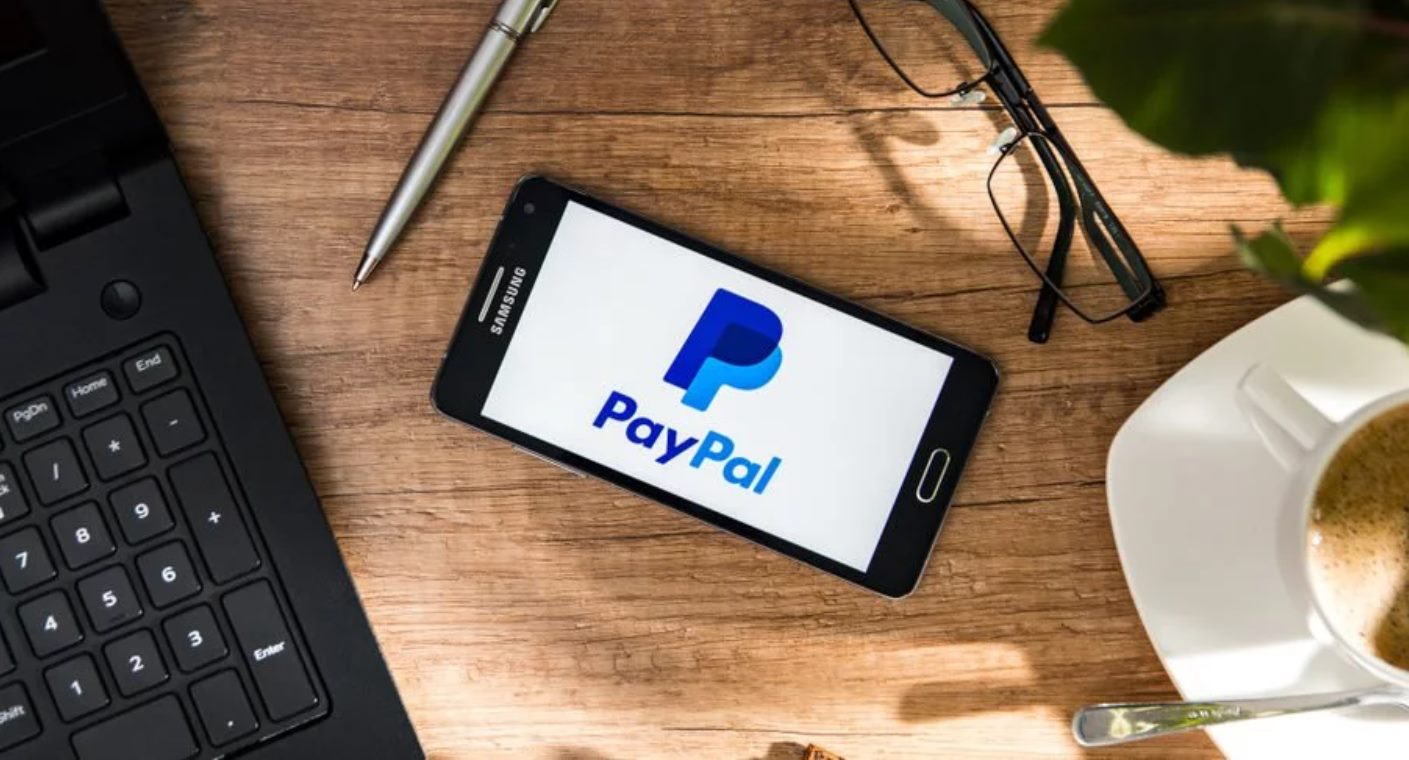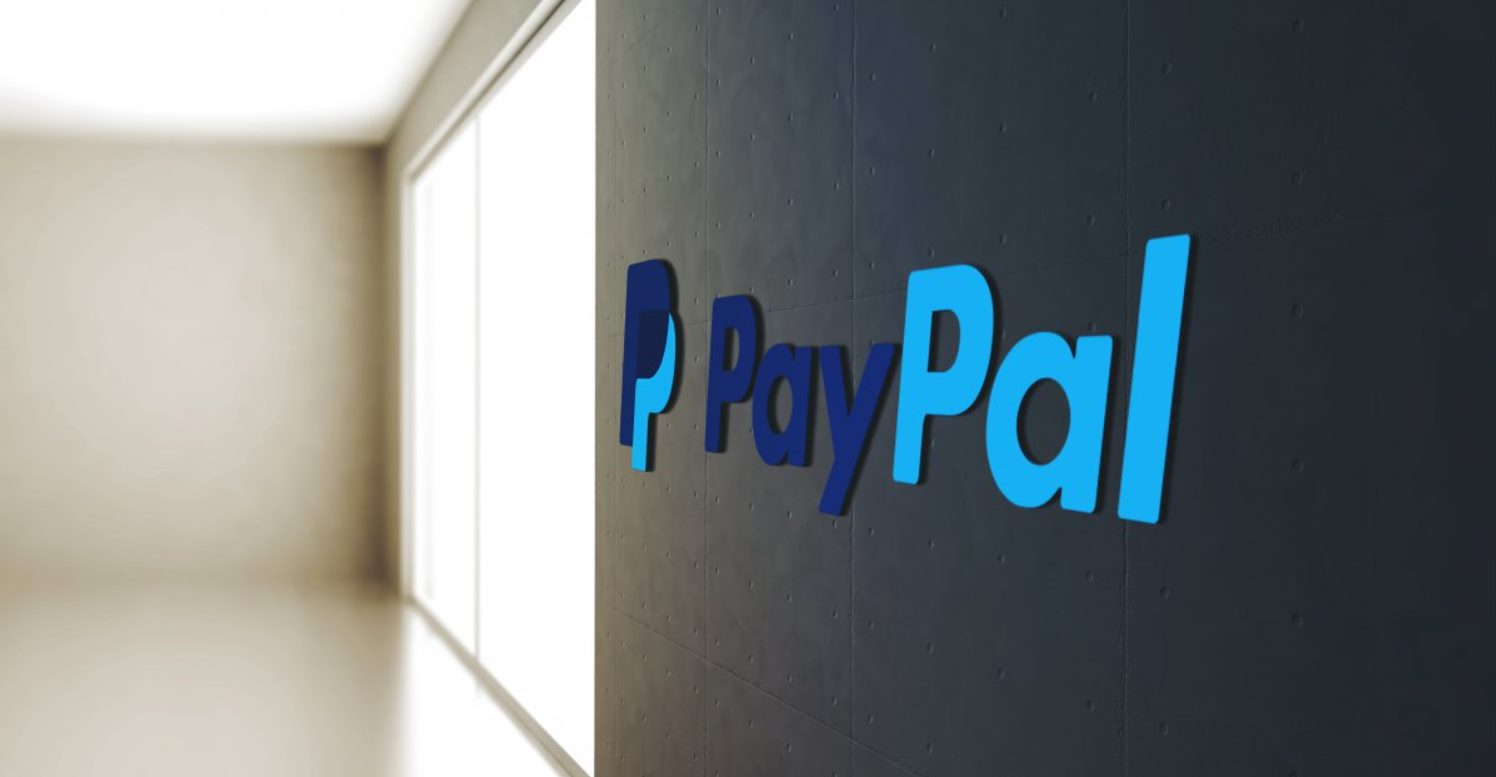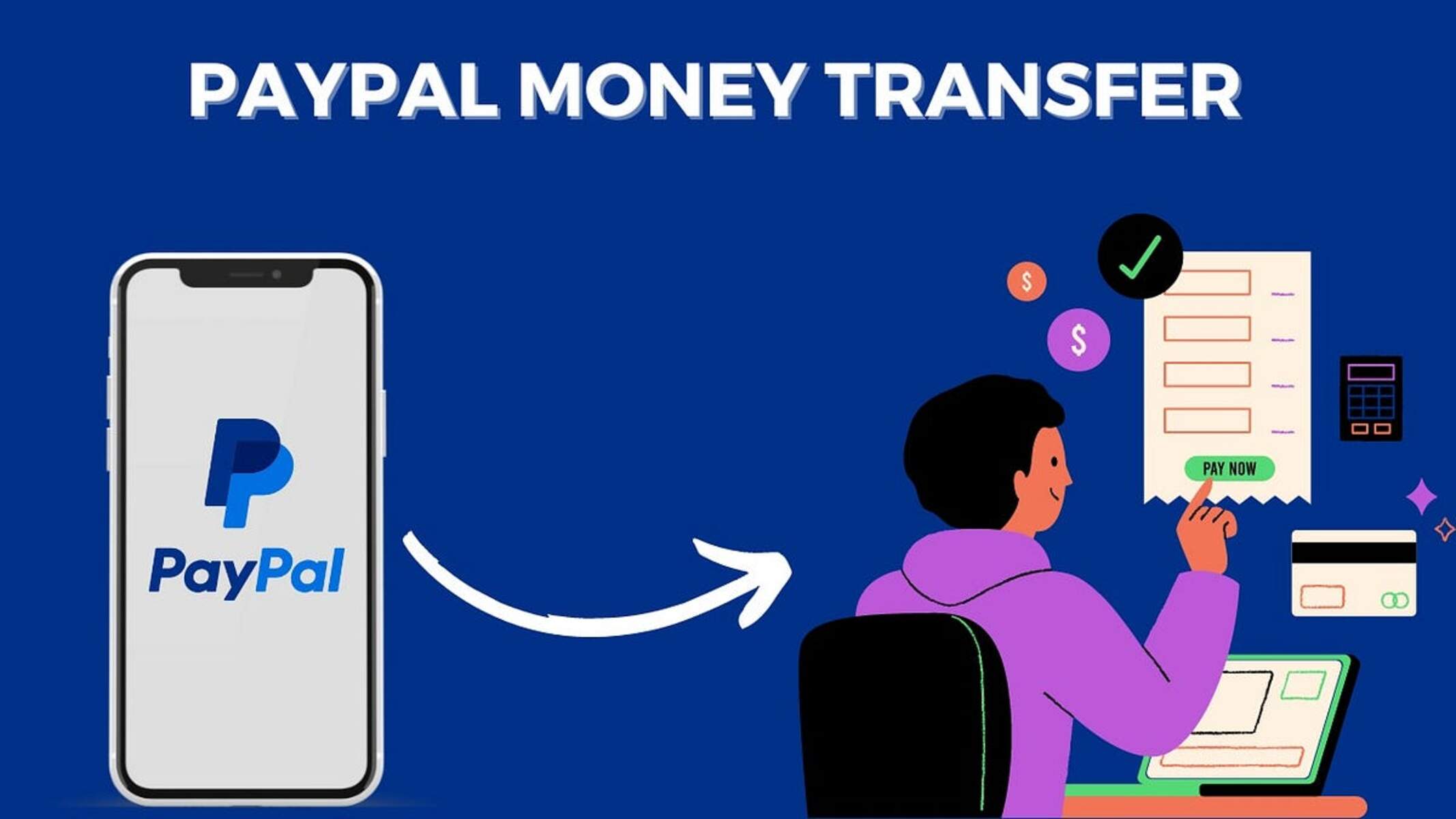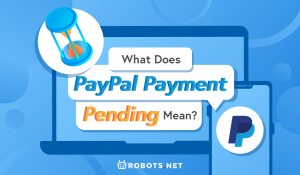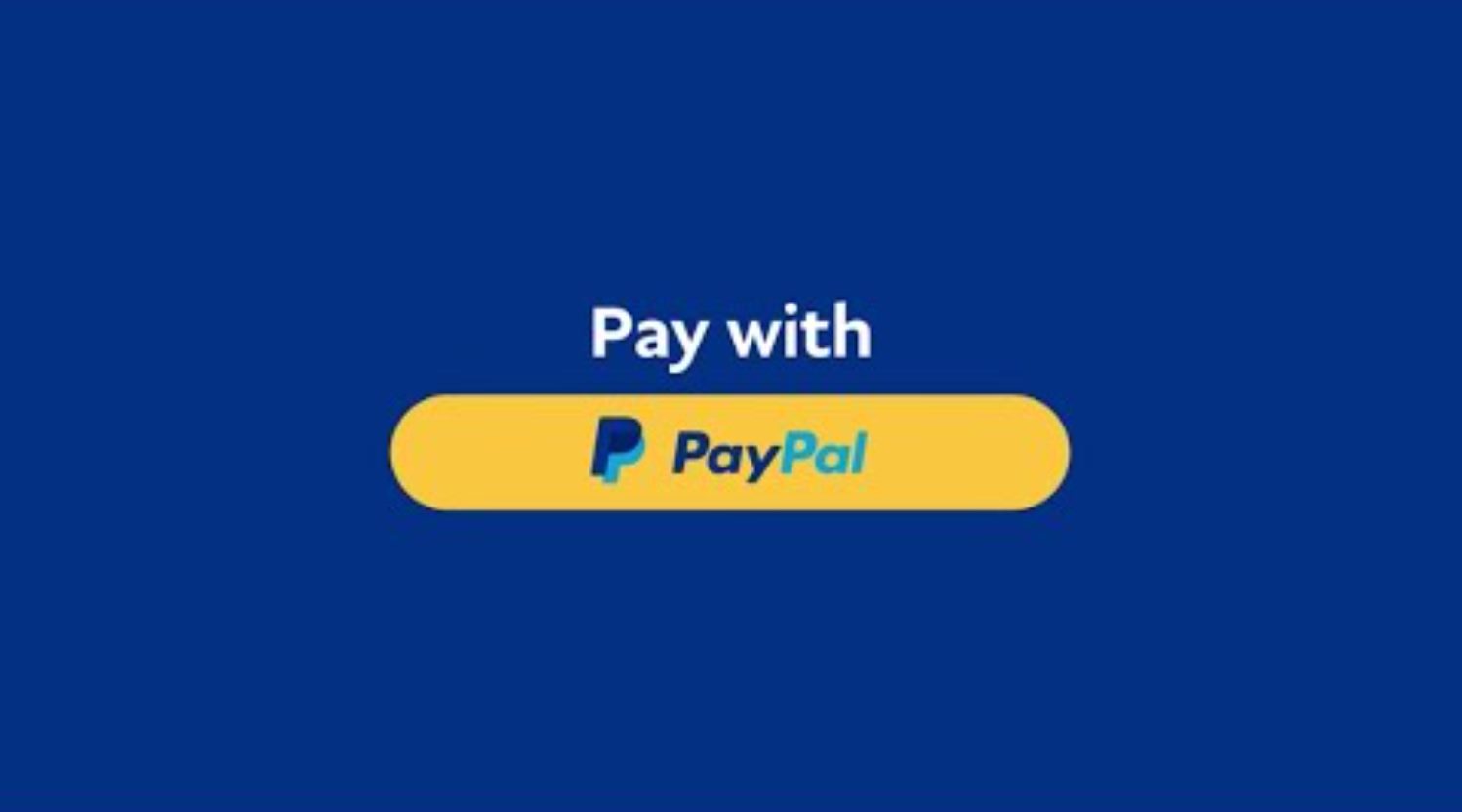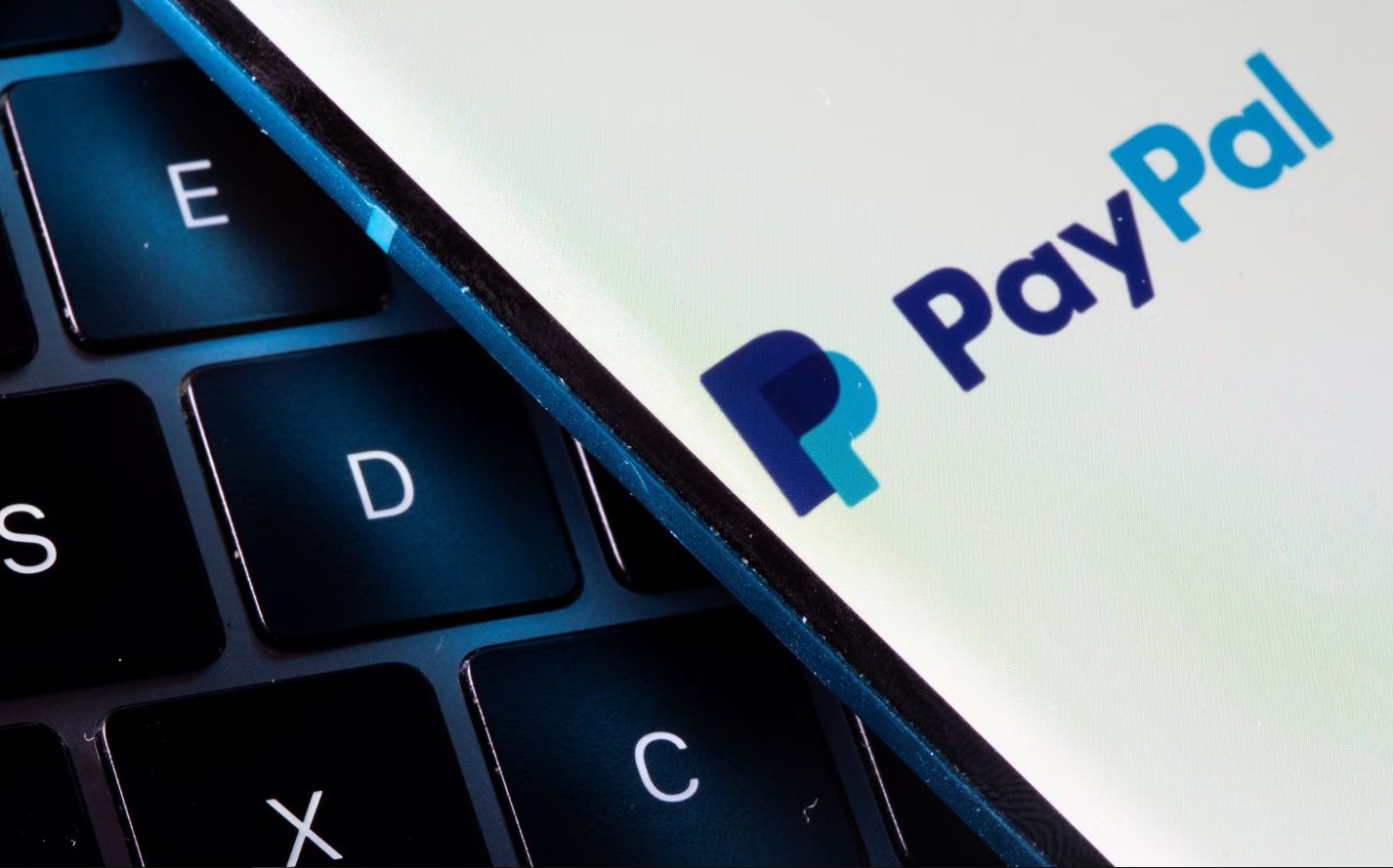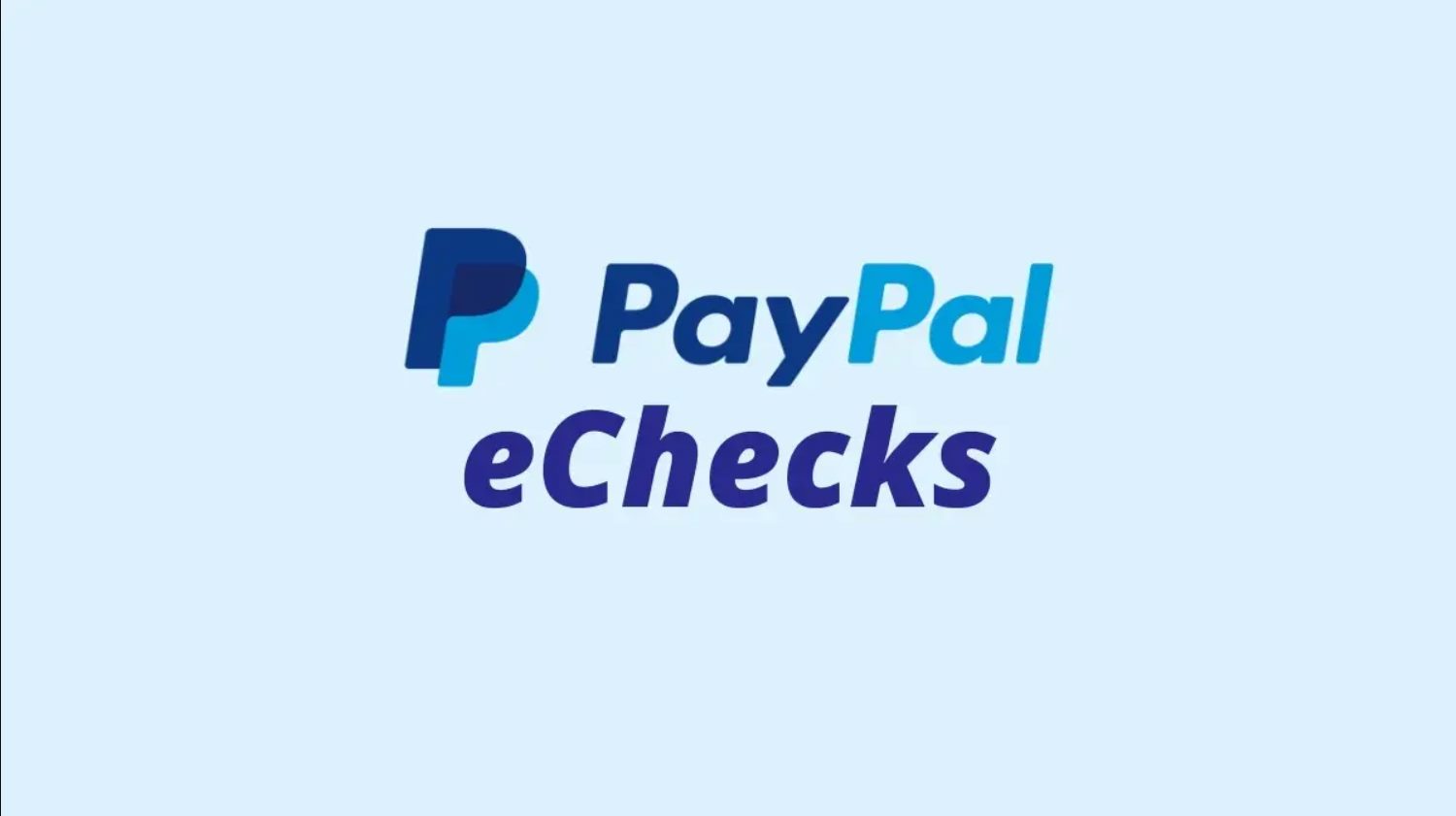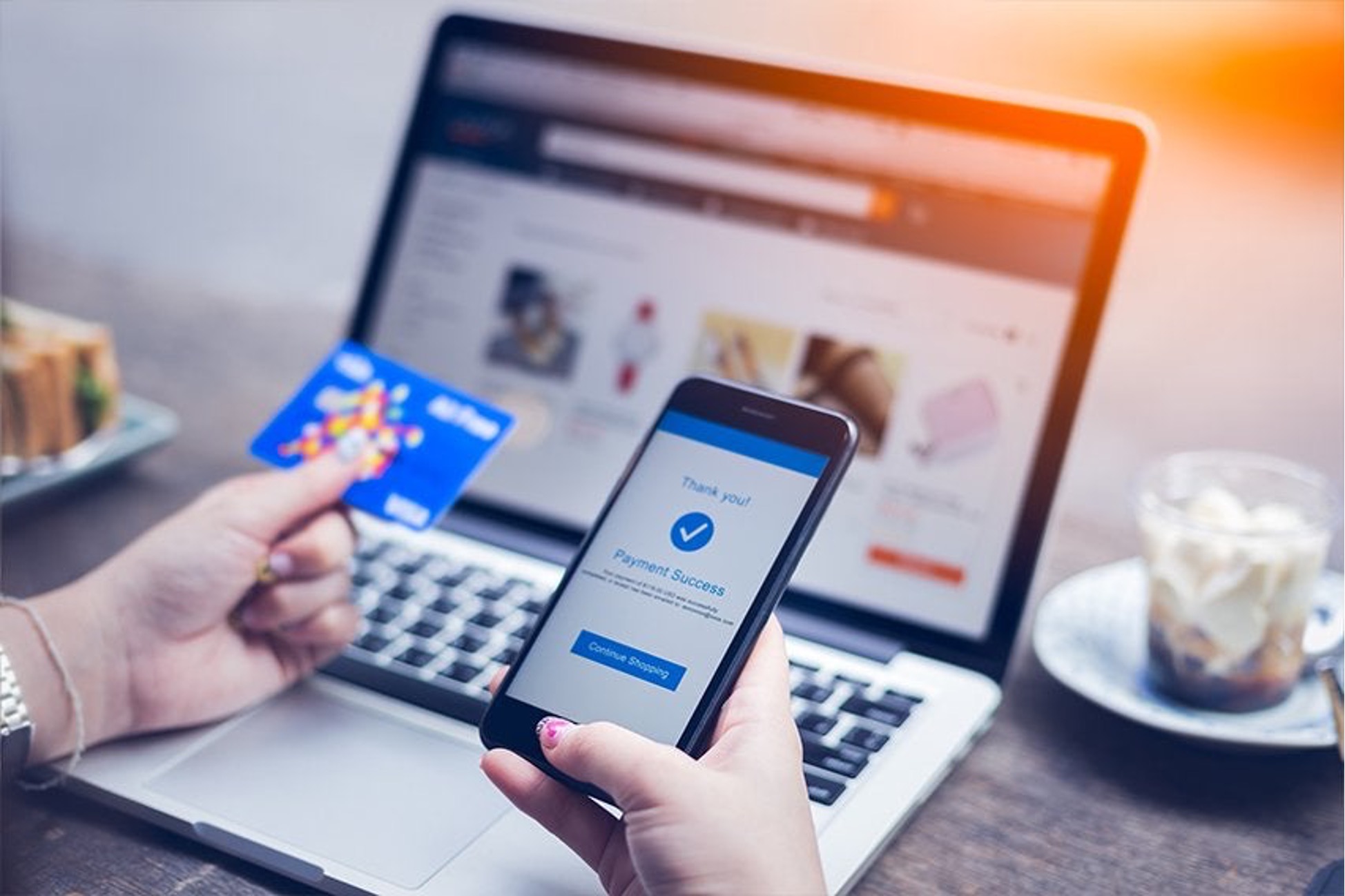Introduction
Welcome to this guide on understanding the time it takes for PayPal to receive money. PayPal is one of the most popular online payment platforms, used by individuals and businesses alike for its convenience and security. However, many people are curious about how long it takes for funds to show up in their PayPal account after a transaction. The answer to this question can vary depending on several factors.
In this article, we will explore the various factors that can affect the time it takes for PayPal to receive money. We will discuss how the sender’s payment method, the recipient’s PayPal account type, currency conversion, verification and security checks, as well as weekends and holidays, can all play a role in the processing time.
Understanding the factors that influence the speed of money transfers through PayPal can help set realistic expectations and alleviate any concerns or frustrations. Whether you are receiving payments for goods and services or sending money to friends and family, having a clear understanding of these factors will empower you to navigate the PayPal payment process more effectively.
Additionally, we will shed light on pending payments and how they can affect the availability of funds in your PayPal account. Pending payments occur when PayPal holds a transaction for further review or verification, and it is important to know how to check the status of such payments.
By the end of this article, you will have a comprehensive understanding of the various factors that impact the time it takes for PayPal to receive money. Armed with this knowledge, you can confidently manage your PayPal transactions and have a smoother and more efficient experience.
Factors Affecting the Time for PayPal to Receive Money
Several factors can influence the amount of time it takes for PayPal to receive money and reflect it in your account. Understanding these factors will help you better manage your expectations and plan your transactions accordingly.
1. Sender’s Payment Method: The payment method used by the sender can affect the processing time. For instance, if the sender uses their PayPal balance or a linked bank account, the transaction is usually processed quickly. However, if the sender pays using a credit or debit card, it may take longer as PayPal may need to verify the payment details before approving the transaction.
2. Recipient’s PayPal Account Type: The type of PayPal account the recipient has can also impact the processing time. Personal accounts typically receive funds faster than business accounts since personal account transactions may require less verification.
3. Currency Conversion: If the transaction involves currency conversion, it can add an additional processing time. PayPal needs to calculate the exchange rate and convert the funds into the recipient’s currency before reflecting them in their account.
4. Verification and Security Checks: PayPal has stringent security measures in place to protect users from fraudulent activities. In some cases, PayPal may conduct additional verification or security checks on certain transactions, which can delay the availability of funds in the recipient’s account.
5. Weekends and Holidays: PayPal processes most payments within minutes, but there may be delays on weekends and public holidays. In such cases, the funds may only appear in the recipient’s account once PayPal’s processing resumes.
It’s important to note that these factors are not absolute and may vary in different situations. While PayPal strives to process transactions as quickly as possible, there may be instances where external factors beyond their control can cause delays.
Now that we understand the factors that can affect the time it takes for PayPal to receive money, let’s explore how pending payments can impact the availability of funds in your PayPal account and how to check the status of your payments.
Sender’s Payment Method
The payment method used by the sender can significantly impact the processing time for funds to reach your PayPal account. PayPal offers various payment options, including PayPal balance, linked bank accounts, credit cards, and debit cards.
If the sender uses their PayPal balance or a linked bank account to make the payment, the funds are usually transferred quickly. PayPal can verify and process these transactions more efficiently since the funds are readily available.
However, if the sender chooses to pay using a credit card or debit card, it may take longer for the funds to reflect in your account. This is because PayPal may need to conduct additional verification checks to ensure the payment is legitimate and authorized by the cardholder.
When a credit or debit card is used, PayPal may need to verify the payment details, such as the card number, expiration date, and security code, to prevent unauthorized transactions. This verification process is in place to protect both the sender and the recipient from fraudulent activities.
In some cases, PayPal may also require the sender to confirm their identity or provide additional information, such as a billing address or contact details, to complete the transaction. These additional verification steps can add extra processing time to the transaction.
It’s important to note that the processing time for payments made using credit or debit cards can vary depending on various factors, such as the card issuer’s policies, the sender’s location, and the transaction amount. In some instances, it may take a few hours or even up to a few days for the funds to appear in your PayPal account.
Therefore, if you are expecting a payment from someone who is using a credit or debit card to make the transaction, it’s essential to keep these potential delays in mind and be patient. PayPal will notify you via email or in your account when the funds have been received and are available for use.
Understanding the impact of the sender’s payment method on the processing time can help you manage your expectations and avoid unnecessary concerns or confusion regarding the availability of funds in your PayPal account.
Recipient’s PayPal Account Type
The type of PayPal account you have as the recipient can play a role in the processing time for receiving funds. PayPal offers two types of accounts: personal and business.
Personal PayPal accounts are typically intended for individuals who use PayPal for personal transactions, such as buying goods or services online or sending money to friends and family. These accounts generally have fewer verification requirements and are designed for faster processing times.
On the other hand, business PayPal accounts are meant for businesses or individuals who use PayPal for commercial purposes. These accounts may require additional verification and documentation to confirm the legitimacy of the business and comply with relevant regulations and policies.
Due to the additional verification steps involved in business accounts, transactions made to business PayPal accounts may take slightly longer to process compared to personal accounts. The verification process for business accounts may include providing information such as business registration details, tax identification numbers, and proof of address.
However, it’s important to note that the processing time difference between personal and business accounts is generally not significant. In most cases, PayPal aims to process payments swiftly regardless of the account type, ensuring that funds are available as soon as possible.
If you have a personal PayPal account, you can usually expect funds to reflect in your account within minutes upon receiving a payment. The processing time may be slightly longer for business PayPal accounts, but it should still be relatively quick.
To ensure a smooth and efficient transfer of funds, make sure to provide accurate and up-to-date information when setting up your PayPal account. This includes verifying your email address, linking a valid bank account, and completing any necessary verification steps requested by PayPal.
By understanding the potential impact of your PayPal account type on processing times, you can manage your expectations and ensure that you receive funds in a timely manner.
Currency Conversion
When it comes to international transactions or payments involving different currencies, currency conversion becomes a significant factor in the processing time for PayPal to receive money. PayPal supports a wide range of currencies, allowing users to send and receive payments globally.
When a payment involves currency conversion, PayPal needs to calculate the exchange rate between the sender’s currency and the recipient’s currency. The funds are then converted into the recipient’s currency before being reflected in their PayPal account.
The time it takes for PayPal to complete the currency conversion process can vary depending on several factors:
a. Exchange Rate: The exchange rate used by PayPal can fluctuate due to market conditions, and it is updated regularly. The timing of the currency conversion can affect the final amount received in the recipient’s account.
b. Conversion Fee: PayPal charges a fee for currency conversion, which is typically a percentage of the total amount being converted. This fee is deducted from the converted currency and can impact the final amount received by the recipient.
c. Verification Checks: PayPal may conduct additional verification checks for currency conversions to ensure compliance with anti-money laundering regulations and other security measures. These checks may add some processing time to the transaction.
It’s important to note that the processing time for currency conversions can be influenced by external factors as well, such as bank processing times for international transfers and any delays caused by public holidays or weekends.
If you regularly receive payments in different currencies, it’s essential to be aware of the potential impact of currency conversion on processing times. Keep in mind that these conversions involve additional steps and calculations, which can contribute to some delay in the availability of funds in your PayPal account.
To stay informed about the exchange rate and any applicable conversion fees, PayPal provides a detailed breakdown of the conversion process during the payment transaction. You can review this information before accepting the payment to have a clear understanding of the converted amount you will receive.
Being mindful of currency conversions when using PayPal for international transactions will help you manage your expectations and ensure that you are prepared for any potential processing delays.
Verification and Security Checks
Verification and security checks are crucial steps in ensuring the safety and legitimacy of transactions processed through PayPal. These checks are in place to protect both the sender and the recipient from fraudulent activities and unauthorized transactions.
Depending on various factors, PayPal may conduct additional verification and security checks on certain transactions. The purpose of these checks is to confirm the authenticity of the payment and ensure compliance with relevant regulations.
Some of the factors that can trigger verification and security checks include:
a. Unusual Activity: If a transaction appears out of the ordinary or deviates from your usual pattern of transactions, PayPal may conduct additional checks to confirm its legitimacy. This can include verifying the source of funds or contacting you for further information.
b. High-Value Transactions: Payments involving large amounts of money may undergo additional scrutiny and verification to prevent money laundering or other financial crimes. PayPal may request additional documentation or information to validate the transaction.
c. Suspicious Transactions: Transactions flagged as potentially suspicious can trigger security checks. PayPal has sophisticated fraud detection systems that may automatically put certain transactions on hold for manual review to ensure their authenticity.
While these verification and security checks are crucial for maintaining the integrity of the payment system, they may add some processing time to the transaction. The duration of these checks can vary depending on the complexity of the transaction, the volume of transactions being processed at the time, and other factors.
If PayPal needs to conduct additional verification for your transaction, they may reach out to you by email or through your PayPal account to request further information or documentation. It is important to respond promptly and provide the requested details to avoid any further delays in the processing of your payment.
While verification and security checks can add some processing time to your PayPal transaction, they ultimately contribute to a safer and more secure payment environment. PayPal’s commitment to these checks helps protect both buyers and sellers, giving users peace of mind when conducting transactions through the platform.
Keep in mind that the vast majority of PayPal transactions are processed without any additional verification or security checks, and funds are usually available within minutes. However, it is always important to be aware of the possibility of these checks and to allow for some additional time when needed.
Weekends and Holidays
Weekends and holidays can have an impact on the processing time for PayPal to receive money. While PayPal processes most transactions quickly, there may be delays in the availability of funds during weekends and public holidays.
On weekends, including Saturdays and Sundays, PayPal’s processing times may be slightly slower compared to weekdays. This is because PayPal’s internal operations, such as verifying payments and conducting currency conversions, may have fewer resources available or operate on a reduced schedule.
Public holidays can also affect the processing time for PayPal transactions. PayPal follows the standard holiday calendar observed in the country where the transaction is being processed. During public holidays, PayPal’s operations may be suspended or have limited staff available, which can result in delays in the processing of payments.
It’s important to consider these factors when expecting funds to be available in your PayPal account. If you are anticipating a payment during weekends or holidays, it’s advisable to allow for additional processing time to account for any potential delays.
It’s worth noting that once PayPal’s processing operations resume after the weekend or holiday, any pending payments or transfers that were delayed during that period will typically be processed and reflect in your account as soon as possible. You will receive notifications from PayPal regarding the availability of funds or any updates regarding the status of your payment.
In the event that you have urgent payment needs on weekends or holidays, it may be beneficial to consider alternative payment methods or make the necessary arrangements in advance to avoid any inconvenience.
Overall, while PayPal strives to provide prompt and efficient payment processing, it’s important to be mindful of potential delays during weekends and public holidays. By setting realistic expectations and allowing for additional processing time, you can manage your PayPal transactions more effectively and avoid unnecessary concerns or frustrations.
Understanding Pending Payments
When using PayPal, you may come across the term “pending payment.” A pending payment refers to a payment transaction that has been initiated but has not yet been completed or cleared by PayPal. During this time, the funds associated with the transaction are temporarily unavailable in your PayPal account.
Several reasons can result in a payment being marked as pending:
a. New PayPal Accounts: If you are a new PayPal user or have recently created a new account, PayPal may place a hold on your transactions as a security measure. This hold is typically temporary and is in place until PayPal verifies your account information and ensures the transaction’s legitimacy.
b. Unconfirmed Address: If the address associated with your PayPal account is unconfirmed or hasn’t undergone the verification process, PayPal may place payments made to you on hold until the address is confirmed. Confirming your address helps validate your account and reduce the risk of fraudulent activities.
c. Dispute or Chargeback: If a buyer disputes a payment or files a chargeback with their bank or credit card company, PayPal may place the disputed amount on hold until the dispute is resolved. This is done to protect both the buyer and the seller during the investigation process.
d. Customer Protection Program: PayPal’s customer protection program may require additional review of certain transactions to prevent fraud and protect buyers and sellers. During this review process, the payment may be held as pending until the transaction is deemed secure and legitimate.
It’s important to note that pending payments are not unusual and often resolved within a short period. However, the duration of the pending status may vary depending on the specific circumstances of each transaction.
To check the status of a pending payment, you can log in to your PayPal account and view the transaction details. PayPal will provide relevant information, such as the reason for the hold and an estimated release date for the funds. Additionally, PayPal will notify you by email when there are updates or changes to the status of your payment.
While a pending payment may temporarily restrict your access to the funds associated with the transaction, it’s important to exercise patience and allow PayPal to complete the necessary reviews or verifications. Once the payment has been cleared, the funds will become available in your PayPal account for use or withdrawal.
Understanding the concept of pending payments and staying informed about the status of your transactions will help you manage your PayPal account more effectively and navigate any potential delays or holds with confidence.
How to Check the Status of a Payment
Checking the status of a payment is essential to stay updated on its progress and ensure a smooth transaction. PayPal provides users with multiple ways to check the status of their payments, whether through the PayPal website or the PayPal mobile app.
1. PayPal Website:
To check the status of a payment on the PayPal website, follow these steps:
- Log in to your PayPal account using your credentials.
- Once logged in, navigate to the Activity or Summary page, where you can view your recent transactions.
- Look for the specific payment you want to check and click on it. This will display more detailed information about the transaction.
- On the transaction details page, you will find the current status of the payment, such as “Pending,” “Processing,” or “Completed.”
Additionally, PayPal may provide further details or instructions related to the payment status, such as the estimated release date for pending funds or any actions required from you to complete the transaction.
2. PayPal Mobile App:
If you prefer to check the status of a payment using the PayPal mobile app, follow these steps:
- Open the PayPal app on your mobile device and log in to your account.
- Tap on the Activity or History tab, which will show you a list of your recent transactions.
- Locate the specific payment you want to check and tap on it to view more details.
- On the transaction details screen, you will find the current status of the payment, along with any additional information or instructions provided by PayPal.
By regularly checking the status of your payments, you can stay informed about the progress of your transactions and take any necessary actions if required. This helps ensure a smooth and hassle-free payment experience.
If you have any concerns or questions about the status of a payment, it is recommended to reach out to PayPal’s customer support for assistance. They can provide further clarification or assistance in resolving any issues you may encounter.
Now that you know how to check the status of your payments, you can easily stay updated and have a better understanding of the progress of your PayPal transactions.
PayPal Website
Checking the status of a payment on the PayPal website is a straightforward process that allows users to access detailed information about their transactions. Here is a step-by-step guide on how to check the status of a payment through the PayPal website:
- Start by visiting the PayPal website using your preferred web browser.
- Log in to your PayPal account by entering your email address and password.
- Once logged in, you will be taken to your account overview page. Look for the “Activity” or “Summary” tab, usually located at the top of the page, and click on it.
- On the “Activity” or “Summary” page, you will see a list of your recent transactions and activities.
- Locate the specific payment you want to check and click on it. This will open a detailed view of the transaction.
- In the detailed view, you will find information related to the payment, such as the payment status, the recipient’s details, transaction ID, and other relevant details.
- The payment status will indicate whether the payment is “Pending,” “Processing,” or “Completed.” Additionally, PayPal may provide further information or instructions related to the payment status, such as the estimated release date for pending funds or any actions required from you.
By following these steps, you can easily check the status of your payment through the PayPal website. Make sure to review the details provided on the transaction page to stay informed about the progress of your payment.
It’s worth noting that PayPal also sends email notifications to keep you updated on the status of your transactions. These notifications may include information about pending payments, completed payments, or any actions required from you.
In case you have any questions or concerns regarding the status of a payment, PayPal’s customer support team is available to assist you. They can provide further insights or resolve any issues you may encounter during the payment process.
Now that you know how to check the status of a payment on the PayPal website, you can easily stay informed and monitor the progress of your transactions. This knowledge will help you ensure a smooth and seamless PayPal experience.
PayPal Mobile App
Checking the status of a payment using the PayPal mobile app is a convenient and user-friendly option, providing you with on-the-go access to your transaction details. Here’s a step-by-step guide on how to check the status of a payment using the PayPal mobile app:
- Open the PayPal mobile app on your smartphone or tablet. Make sure you have downloaded and installed the latest version of the app.
- Log in to your PayPal account by entering your email address and password, or use biometric authentication if enabled.
- Once logged in, you will be on the main screen of the app. Look for the “Activity” or “History” tab, which is usually located at the bottom of the screen, and tap on it.
- In the activity or history section, you will see a list of your recent transactions and activities.
- Scroll or search for the specific payment you want to check and tap on it. This will open a detailed view of the transaction.
- In the transaction details view, you will find information related to the payment, including the payment status, recipient’s details, transaction ID, and other relevant information.
- The payment status will indicate whether the payment is “Pending,” “Processing,” or “Completed.” Additional details or instructions related to the payment status may also be provided by PayPal.
By following these simple steps, you can easily check the status of your payment using the PayPal mobile app. The app provides a user-friendly interface for monitoring and managing your PayPal transactions while on the go.
In addition to checking the payment status through the mobile app, you may also receive push notifications on your device that keep you updated on the progress of your transactions. These notifications provide real-time updates and can be customized based on your notification preferences in the PayPal settings.
If you encounter any issues or have questions regarding the status of a payment, the PayPal mobile app provides access to customer support. You can access help resources, initiate a chat, or reach out to support through the app for assistance.
Now that you know how to check the status of a payment using the PayPal mobile app, you can efficiently manage your PayPal transactions while on the move. The app’s intuitive interface and convenient features offer a seamless payment experience.
Frequently Asked Questions
1. How long does it typically take for PayPal to receive money?
Most PayPal transactions are processed within minutes, and funds are available in your account shortly after. However, certain factors like the sender’s payment method, recipient’s PayPal account type, currency conversion, and verification checks can affect the processing time. It’s best to check the specific details of your transaction for a more accurate estimate.
2. Why is my payment showing as “Pending”?
A “Pending” status for your payment typically means that PayPal is reviewing or verifying the transaction. It could be due to factors such as new accounts, unconfirmed addresses, disputes or chargebacks, or security checks. Pending payments are a temporary hold, and the funds will be available once the transaction is cleared.
3. Can I expedite the processing of my payment?
While PayPal strives to process payments as quickly as possible, it may not be possible to expedite the processing time for all transactions. Factors like verification requirements and security checks are necessary for ensuring the safety of both parties involved. However, ensuring your PayPal account is verified and providing accurate information can help streamline the processing of your payments.
4. What happens if a payment is on hold?
If a payment is on hold, it means that PayPal is conducting additional reviews or verifications for the transaction. Once the necessary checks are completed, the funds will be released and available in your PayPal account. You will receive updates from PayPal regarding the status of the payment and any required actions from your end.
5. Can I cancel a pending payment?
If a payment is still in the “Pending” status, you may have the option to cancel it. Check the transaction details on your PayPal account to see if cancellation is available. Keep in mind that once a payment is no longer pending and has been completed or processed, it cannot be canceled. In such cases, you may need to work with the recipient to request a refund.
6. What should I do if I have concerns or questions about a payment?
If you have any concerns or questions related to a payment, it’s recommended to reach out to PayPal’s customer support for assistance. They have a dedicated team available to address your queries, provide guidance, and help resolve any issues you may encounter during the payment process.
These frequently asked questions provide valuable insights into common concerns and curiosities surrounding PayPal transactions. If you have any additional questions or need further information, it is recommended to refer to PayPal’s official website or contact their customer support for assistance tailored to your specific situation.
Conclusion
Understanding the factors that impact the time it takes for PayPal to receive money is essential for managing your transactions effectively. Factors such as the sender’s payment method, recipient’s PayPal account type, currency conversion, verification and security checks, as well as weekends and holidays, all play a role in the processing time.
By being aware of these factors, you can set realistic expectations and avoid unnecessary concerns or frustrations. It’s important to remember that while PayPal strives to process payments quickly, delays can occur due to various circumstances beyond their control.
In addition, pending payments are a common occurrence in PayPal transactions. These payments are temporarily put on hold for review or verification, but they are usually resolved within a short period, allowing the funds to become available in your PayPal account.
To check the status of your payments, you can use the PayPal website or mobile app, where you can view detailed transaction information, including the payment status, recipient details, and any additional instructions provided by PayPal.
Lastly, if you have any concerns or questions about a payment, PayPal’s customer support is available to assist you. They can provide guidance, address queries, and help resolve any issues you may encounter during the payment process.
By understanding these aspects of PayPal’s payment process and effectively managing your transactions, you can have a smoother and more efficient experience when using PayPal to send and receive money.
Remember to stay informed, communicate with the recipient when necessary, and utilize the available resources provided by PayPal to ensure a safe and secure payment experience for all parties involved.







